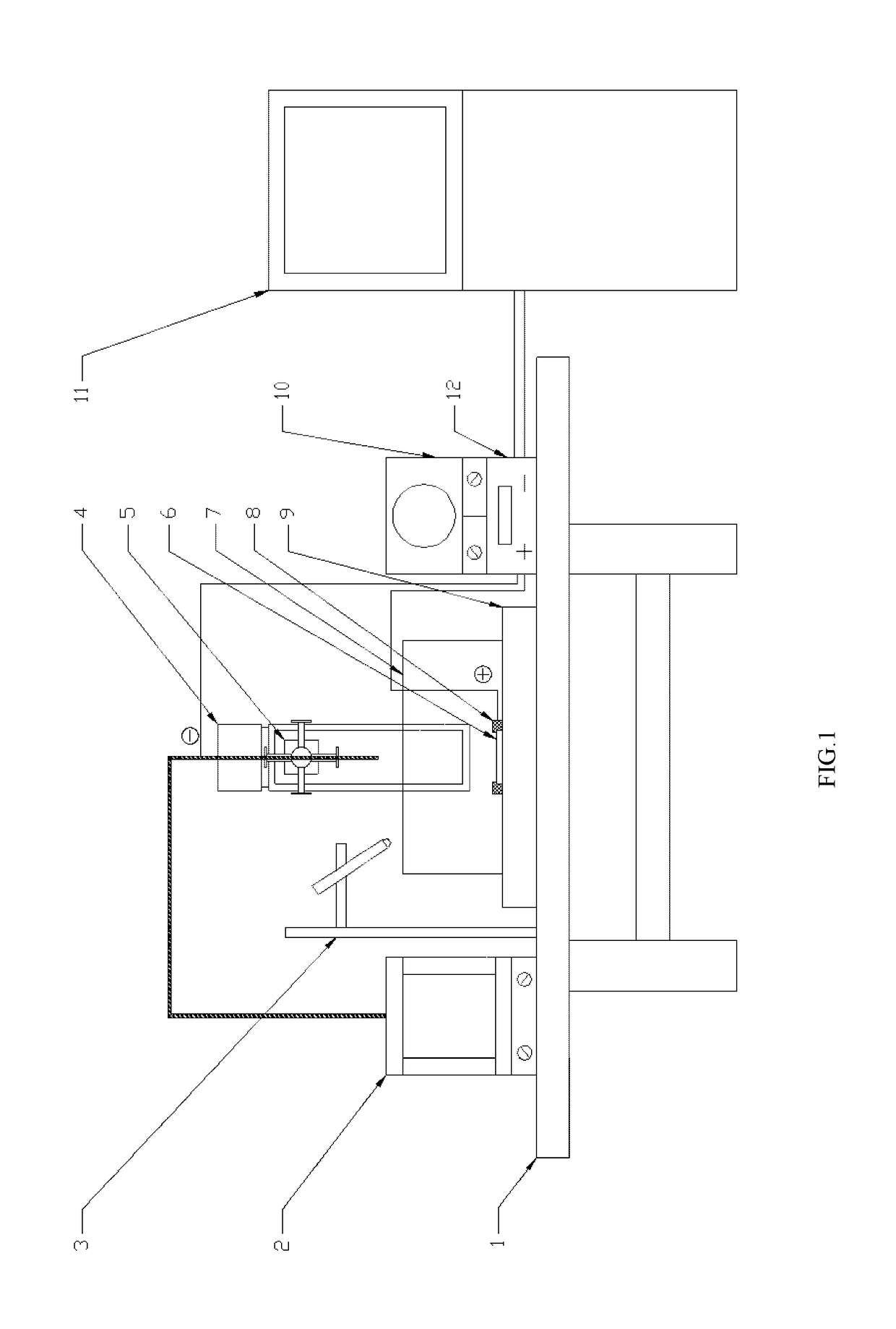Surface modification device based on electrophoresis-assisted micro-nano particle melting and self-assembly
a surface modification and micro-nano particle technology, applied in the field of surface modification, can solve the problems of inability to fully the failure of the metal material usually comes from the most common failure, and the failure of the metal material to meet the requirements of the surface, so as to enhance the binding force between the metal surface and the surfa
- Summary
- Abstract
- Description
- Claims
- Application Information
AI Technical Summary
Benefits of technology
Problems solved by technology
Method used
Image
Examples
Embodiment Construction
[0025]The core idea of the present disclosure is to provide a surface modification device based on electrophoresis-assisted micro-nano particle melting and self-assembly capable of enhancing a binding force between a metal surface and nanoparticles.
[0026]To make those skilled in the art better understand solutions of the present disclosure, the present disclosure is further described below in detail in combination with drawings and specific embodiments.
[0027]Referring to FIG. 1, FIG. 1 is a structural schematic diagram a surface modification device based on electrophoresis-assisted micro-nano particle melting and self-assembly according to embodiments of the present disclosure.
[0028]The specific embodiments of the present disclosure provides a surface modification device based on electrophoresis-assisted micro-nano particle melting and self-assembly, including a working table 1, a particle and solution mixing and circulating container 2, a processing recess 7, a solution conveying a...
PUM
| Property | Measurement | Unit |
|---|---|---|
| corrosion | aaaaa | aaaaa |
| surface properties | aaaaa | aaaaa |
| hardness | aaaaa | aaaaa |
Abstract
Description
Claims
Application Information
 Login to View More
Login to View More - R&D
- Intellectual Property
- Life Sciences
- Materials
- Tech Scout
- Unparalleled Data Quality
- Higher Quality Content
- 60% Fewer Hallucinations
Browse by: Latest US Patents, China's latest patents, Technical Efficacy Thesaurus, Application Domain, Technology Topic, Popular Technical Reports.
© 2025 PatSnap. All rights reserved.Legal|Privacy policy|Modern Slavery Act Transparency Statement|Sitemap|About US| Contact US: help@patsnap.com

